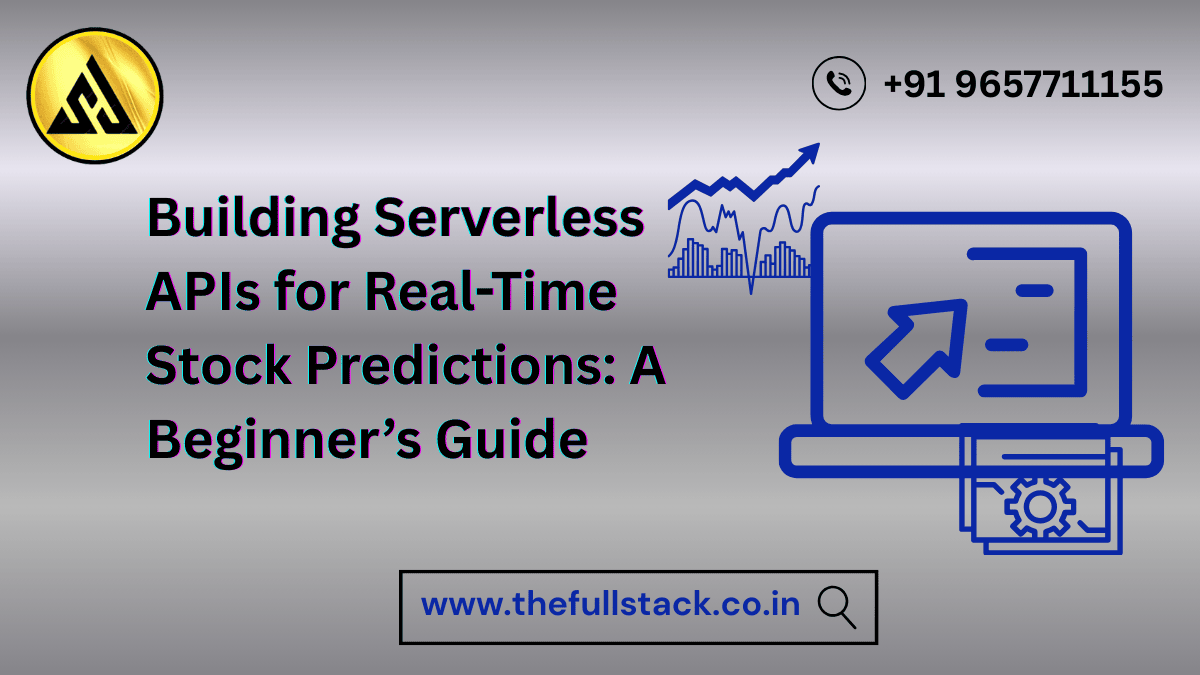
Building Serverless APIs for Real-Time Stock Predictions: A Beginner’s Guide
The world of stock trading is moving faster than ever. Traders and investors need instant insights to make decisions in volatile markets. Traditional infrastructure can’t always handle real-time demands due to latency, cost, and scalability issues. This is where serverless APIs shine—allowing you to deploy real-time stock prediction models without managing servers, all while saving costs and improving performance.
In this beginner-friendly guide, we’ll break down serverless architecture, explain how it works for stock predictions, provide practical tips, and explore real-world applications. Whether you’re an aspiring trader, developer, or company employee, this guide will help you get started with confidence.
Understanding Serverless APIs
A serverless API is an application interface hosted on the cloud that automatically manages server infrastructure. Instead of worrying about servers, scaling, or uptime, the cloud provider handles it for you.
Key Advantages:
- Automatic Scaling: Handles multiple requests simultaneously.
- Cost-Effective: Pay only for the actual computation time.
- Focus on Logic: Concentrate on your prediction model instead of server maintenance.
For stock predictions, serverless APIs allow models to process live market data instantly, providing traders with actionable insights in real time.
How Real-Time Stock Prediction Works
Real-time stock predictions involve analyzing live financial data and forecasting market trends using machine learning models. A serverless API acts as a bridge between your model and the end-user or application.
Workflow Overview:
- Data Collection: Fetch live stock market data using APIs from exchanges or financial platforms.
- Prediction Engine: Run ML models to forecast prices, trends, or market sentiment.
- Serverless Deployment: Host the model in a serverless function for instant access.
- User Interaction: Deliver predictions to trading apps, dashboards, or notifications in milliseconds.
Example: A trader requests Tesla’s stock trend prediction. The serverless API triggers the ML model, processes the latest market data, and returns a prediction almost instantly.
Benefits of Serverless APIs for Stock Predictions
- Low Latency: Immediate predictions reduce the delay between data arrival and actionable insights.
- Elastic Scalability: Can handle spikes in traffic without manual intervention.
- Reduced Operational Costs: No need to maintain servers 24/7.
- Quick Updates: Easily replace or upgrade ML models without downtime.
- Enhanced Security: Cloud providers offer built-in authentication and data protection.
Real-Life Applications
- Retail Trading Platforms: Provide individual investors with real-time stock insights.
- Automated Trading Bots: Integrate predictions into bots that execute trades automatically.
- Financial Analytics Services: Supply portfolio managers and analysts with instant predictive insights.
- Investor Alerts: Notify investors about significant stock trends or anomalies immediately.
Beginner-Friendly Tips
- Start Small: Deploy a single stock prediction model on a serverless platform like AWS Lambda, Azure Functions, or Google Cloud Functions.
- Use Pre-Trained Models: Beginners can start with open-source ML models for practice.
- Reliable Data Sources: Use trusted APIs for stock data to ensure prediction accuracy.
- Monitor Performance: Track latency, response time, and prediction accuracy.
- Implement Security: Protect API endpoints with authentication and encrypt sensitive data.
Example Scenario
Imagine you want to predict short-term trends for Apple stock:
- Step 1: Collect real-time Apple stock data using an exchange API.
- Step 2: Process data through a lightweight ML model predicting short-term price movement.
- Step 3: Deploy the model as a serverless API.
- Step 4: Your trading app requests predictions, which are returned in milliseconds, helping you make timely trading decisions.
This approach allows instant predictions with minimal infrastructure setup—a perfect way for beginners to explore real-time trading analytics.
Industry Insights
- Serverless Growth: Cloud providers report increasing adoption for financial analytics due to cost efficiency and scalability.
- AI Integration: ML-powered predictions are becoming standard in both retail and institutional trading platforms.
- Beginner-Friendly Tools: Cloud platforms now offer simple deployment solutions suitable for learners and hobbyist developers.
- Mobile Integration: Predictions can easily be sent to mobile trading apps or dashboards for instant decision-making.
Why Serverless Stock Prediction Matters
Deploying prediction models using serverless APIs ensures:
- Speed: Real-time analysis of stock data.
- Scalability: Handle thousands of simultaneous requests efficiently.
- Flexibility: Update models quickly without infrastructure overhead.
- Accessibility: Allows beginners and professionals to experiment without large budgets.
Even small-scale traders can now leverage AI-driven real-time predictions without complex server management.
Call-to-Action
Stay ahead in the stock market with real-time, AI-powered insights. Start building your serverless API today and transform how you approach trading.
👉 Check out our advanced courses on AI trading and serverless architecture to learn deployment techniques, real-time predictions, and practical hands-on projects.
you may be interested in this blog here:-
What’s the difference between Treasury bonds, notes, and bills
Can I Open a Brokerage Account for My Child
What is the Contrast Between Favored Stock and Normal Stock?


Leave a Reply